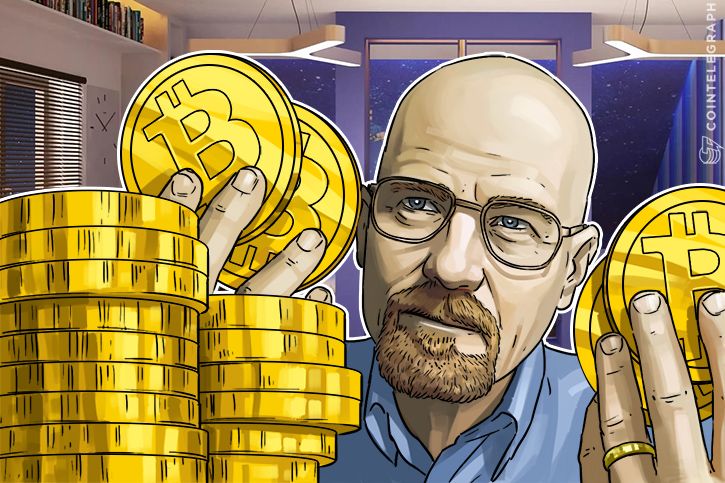Examining Bitcoin's ups and downs

Bitcoin has progressed from being only a nerd's version of gold years ago.
Bitcoin has undergone a lot of ups and downs in its brief history. Online trading school Investoo.com has created an infographic detailing the major Bitcoin crashes since it was introduced. Bitcoin is both a cryptocurrency and an electronic payment system invented by an unidentified programmer, or group of programmers, under the name of Satoshi Nakamoto. It was introduced on 31 October 2008 to a cryptography mailing list, and released as open source software in 2009.
Investoo.com notes Bitcoin's journey has been long, from the first Bitcoin transaction, which resulted in the kick-off of the Bitcoin blockchain on 3 January 2009, to the recent moves by Chinese authorities to restrict Bitcoin transactions.
Earlier this year, the People's Bank of China launched spot checks on the country's three largest Bitcoin exchanges to look into a range of possible rule violations, amid increasing government efforts to stem capital outflows and relieve pressure on the yuan. Stanko Saponja, an analyst at Investoo.com, notes that when Bitcoin was introduced in 2009, one Bitcoin was equivalent to $0.00076.
In December last year, the total value of all Bitcoins in circulation hit a record high of above $14 billion. However, in January this year, the dramatic rally in digital currency came to a spectacular end with a plunge of up to 20% as China's yuan rose sharply. "In 2013, the price briefly exceeded $1 200, and this was followed by a crash in the price of Bitcoin, sending it down to below $250 soon after," Saponja notes. "This has led some skeptics to claim this price rise, too, is a bubble."
He points out the size and computing power of the Bitcoin mining network, which confirms and validates transactions, has risen exponentially since then, and the number of users, merchants, and exchange volume has grown similarly. According to Saponja, the rapid rise in 2013 is now attributed to fraudulent trading and price manipulation that exploited illiquid and immature markets, and which eventually led to the famous collapse of the primary, and corrupt, Bitcoin Exchange. "Bitcoin has gone from being just a nerd's version of gold years ago, to now being another thing people do to try to hold onto their wealth," he says.
Saponja says in 2015, Bitcoin rose modestly, from $313 to $431, a 37% rise, kicking off a year of steady growth throughout 2016. The price surged 122% in 2016, making it one of the top trades of the year (from around $400 to just under $1 000), he adds. Investoo.com notes 2016 saw relative price stability in Bitcoin, as its price rose steadily, and with lower volatility than had been experienced in the past, and it also gained wider acceptance and legitimacy as a means of payment.
Some analysts predict 2017 will be another banner year, while others are more skeptical, calling this recent rise a bubble that is waiting to burst (current price is 1 BTC = $1 023.38 – 27 March 2017). "My opinion is that demand for Bitcoin as a currency is also likely to continue to grow in 2017, again as China has promised to restrict capital outflows and to devalue its currency in order to protect exporters."
Describing the major drivers of Bitcoin, Saponja says increased demand came from China as capital controls tightened and regulators continued to devalue the yuan systematically. China and India have both been big buyers as part of a broader global landscape that has pushed Bitcoin's acceptance, further along, he notes.
"Chinese investors have bought Bitcoins as the yuan has lost its value, while the surge in India has been driven thanks to the government's decision to retire some currency denominations. In most countries, companies that trade Bitcoins onto the local currency would be regulated, as more and more larger corporations start offering Bitcoin as a payment alternative."
Nonetheless, he says Bitcoin has sometimes attracted the wrong types of people – those looking to prey on others who fall under the spell of a never-ending upward trend for Bitcoin's price. "Whether it's illegal online marketplaces, pump-and-dump schemes or shady crypto exchanges, they all create a black cloud over the industry. And, every time there is another Bitcoin robbery or scam, it draws attention from the mainstream.
"The bad actor problem creates a consumer protection issue for Bitcoin. When people learn about Bitcoin and are lured to products and services that do not follow best practices, as opaque as they may be in this industry, that's a problem. According to some analysts, the five biggest threats facing Bitcoin are the centralisation of Bitcoin, fraud, regulation, poor mobile platform support, and confidence."
Chuck Reynolds
Contributor
Alan Zibluk – Markethive Founding Member











